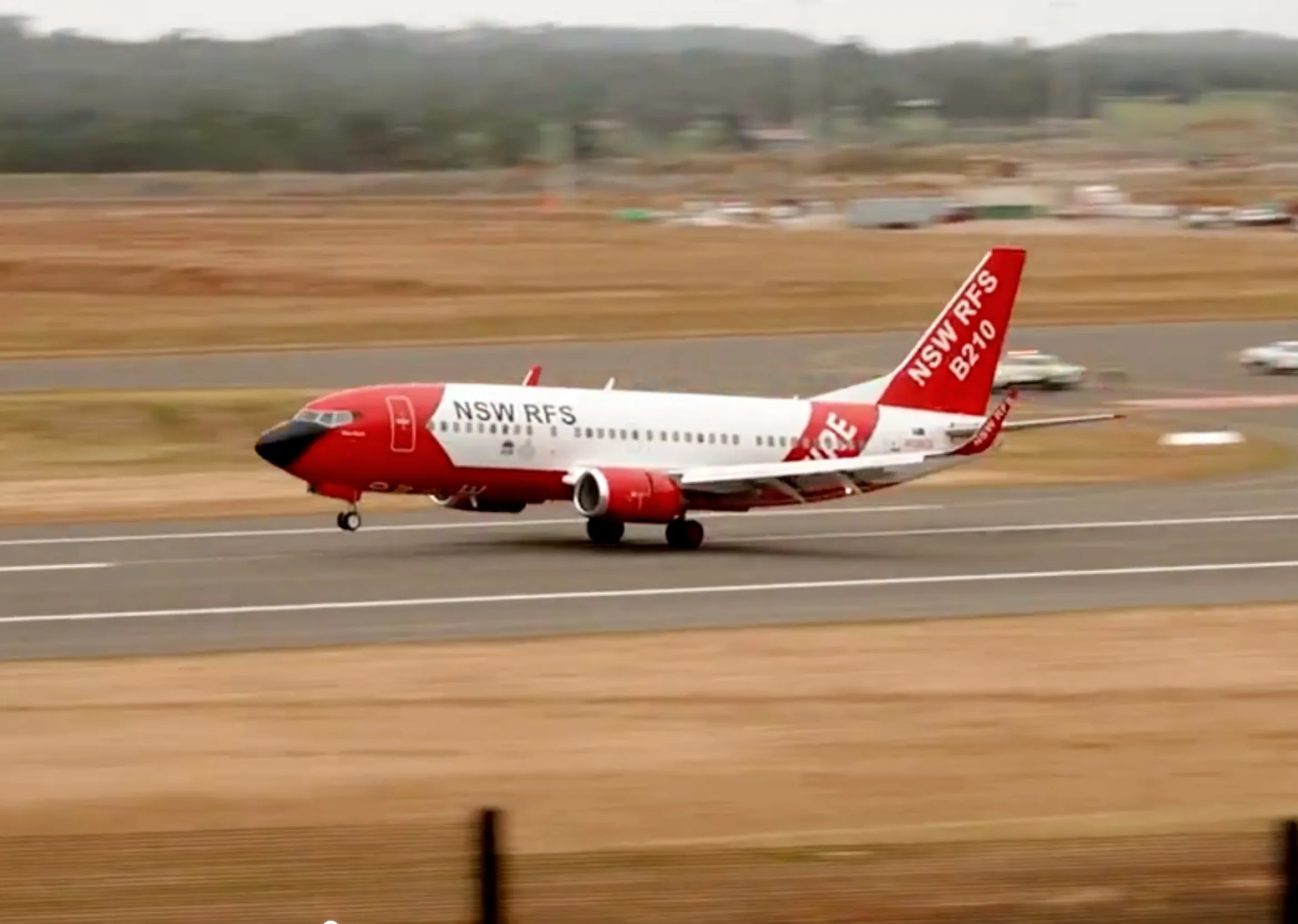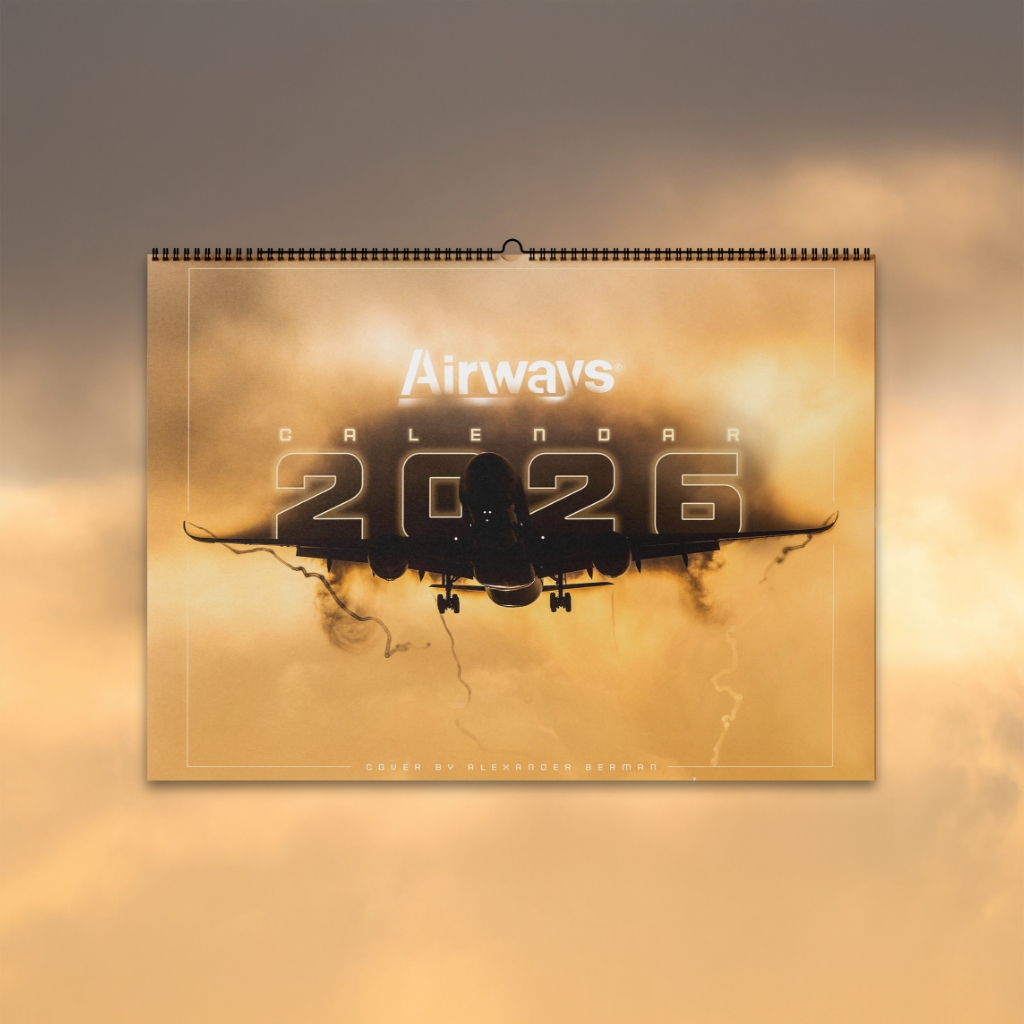SYDNEY — A New South Wales Rural Fire Service Boeing 737 fireliner owned and operated by Coulson Aviation has become the first passenger jet to land at the new Western Sydney International Airport (WSI).
The former Southwest j(WN) 737-300 took off from RAAF Richmond in the northwest greater Sydney area on Tuesday morning, flying in for a celebration of the historic event on the site of the airport, which has been under development for the better part of 40 years. The Boeing 737, nicknamed “Marie Bashir” and registered as N138CG, touched down at WSI shortly after 8:30 am local time.
Western Sydney International CEO Simon Hickey called the landing a “significant milestone”, adding that it was “A big moment that included welcoming many community onlookers and media on site to capture the historic arrival.”
It is technically accurate to call the Coulson Aviation 737 Fireliner a "passenger jet" because it is based on a Boeing 737-300 originally designed for passenger service, and most conversions by Coulson retain 66–70 passenger seats in the cabin. However, its primary certification and operational use are as a large air tanker for aerial firefighting, not regular airline passenger operations.
Regardless, the arrival is part of a two-day training exercise for airport facilities as WSI progresses toward certification. Over the two days, police, fire, rescue, medical, federal police, and Border Force personnel will train alongside 300 volunteers and 50 emergency vehicles to simulate a range of emergencies, culminating in an aircraft accident simulation.
“It’s a positive opportunity for our airport staff and all first responders to test our collective resources, protocols, and general preparedness in a safe, controlled environment,” said Simon Hickey.
The single-runway airport is slated to open to passenger flights by late 2026. So far, Qantas (QF), Jetstar (JQ), Air New Zealand (NZ), and Singapore Airlines (SQ) have agreed to launch flights.
Both Qantas and Jetstar will base aircraft at the airport, flying to Brisbane (BNE), the Gold Coast (OOL), and Melbourne (MEL), while Air New Zealand will fly to Auckland (AKL), and Singapore Airlines will fly to Singapore (SIN). Additionally, Qantas Freight will begin operations from its own cargo area on the south side of WSI, but hasn’t yet specified any destinations.
A Long, Choppy History
The story of WSI begins in 1986, when the Australian government, after many proposals since the 1960s, selected Badgerys Creek as the location for Sydney’s second airport. For the next five years, they bought up $170 million AUD worth of land, totaling 1,780 hectares.
Work on the airport would be paused shortly thereafter to prioritize efforts to build a third runway at Sydney’s main airport (SYD), which would open as 16L/34R in 1994.
The project would reemerge from the shelf in 2008 when concerns grew that SYD would reach capacity by 2030. In 2012, the federal and NSW governments released a 3,200-page report recommending Badgerys Creek as the optimal location for Sydney’s new airport, which was formally finalized and announced in 2014. Construction began in 2018.
But the planning to this point didn’t come without its hurdles. In 2015, the government released a draft environmental impact statement that included proposed arrival flight paths. Beginning at a merge point fix over Blaxland, about 10 nautical miles to the northwest of the airport at around 5,000 feet, then following a path southeast toward the airport and turning either southwest or northeast, depending on which runway is in use.
The study found that the most significant noise pollution would affect primarily the towns and suburbs of Emu Plains, Erskine Park, Glenbrook, Greendale, Lapstone, Luddenham, Penrith, Silverdale, St. Marys, Wallacia, and Warragamba, as well as Blue Mountains National Park and declared wilderness, Twin Creek, and Sydney Science Park estates. Residents of the communities expressed extensive outrage, leading to the scrapping of the Blaxland merge point proposal.
In 2016, the final Environmental Impact Statement was released with the same flight paths, worded to insinuate that the flight paths, environmental impact, and community consultation work would not be done until after construction begins, as it would be two years later. Another set of proposed flight paths, SIDs (Standard Instrument Departures) and STARs (Standard Terminal Arrival Routes), was released in June 2023.
The new airport has also been heavily criticized for its lack of transportation options, given its remote location. The only real options for getting directly to and from WSI after it opens will be personal vehicles, ride-sharing, or buses. The airport has stated that it intends to serve west Sydney primarily, so that it will focus on that initially.
The airport authority has outlined a couple of public transport options to downtown Sydney, including catching the Sydney Metro in St Marys, which is a 23km drive from the airport. Express buses will be available to and from Parramatta and Liverpool, both around 35km from the airport, and both have Metro line connections.
Western Sydney International is expected to become Sydney’s primary airport by 2060, with up to 82 million annual passengers by then. The airport expects to expand its existing 13-jetbridge terminal as it grows past its 10 million passenger capacity. New terminals and a second parallel runway 1.9km to the south are also in the plans.
The first aircraft to land at WSI was in 2020, when the construction was still essentially a dirt field. A Piper Warrior made an emergency landing in an open field after a throttle problem. Construction on the runway began in 2022, and the first official landing on the completed runway was on October 2, 2024, by a Piper Twin Comanche, VH-8MN, as it conducted lighting tests for the airport.



.webp)
